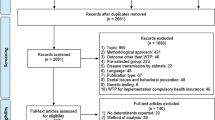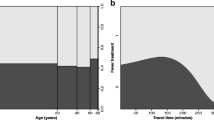Abstract
’Protest zeros’ occur when respondents reject some aspect of the contingent valuation (CV) market scenario by reporting a zero value even though they place a positive value on the amenity being valued. This is inevitable even in the best-designed CV study, and, when excluded on an ad hoc basis, may cause a selection bias problem. This could affect the reliability of the willingness to pay (WTP) estimates obtained for preference assessment. Treatment of ‘protest zeros’ in general, and particularly in the context of developing countries, has been rather unsatisfactory. Most case studies employ the Heckman 2-step approach, which is much less robust to co-linearity problems than the Full Information Maximum Likelihood (FIML) estimator.
The main objective of this article is to illustrate a sequential procedure to simultaneously deal with co-linearity and selectivity bias resulting from excluding ‘protest zeros’ in CV analysis. The sequential procedure involves different levels of estimation and diagnostics with the 2-step and FIML estimators; the duration of the procedure depends on the diagnostic test results at each stage of the estimations.
The data used for the analysis were elicited using the conventional dichotomous choice buttressed with an open-ended follow-up question. The survey was designed to elicit households’ WTP for a proposed community-based malaria control scheme in rural Cameroon. In the application context, we found that the different levels of estimation and diagnostics resulted in reliable WTP estimates from the FIML approach, which would obviously have been overlooked in the absence of such diagnostics.




Similar content being viewed by others
Notes
The main function of the dam is to increase the volume of water into the River Sanaga that supplies Cameroon with hydroelectricity. The dam is located in the Bamendjim community of the Western Province of Cameroon; however, the artificial lake is found in the Ndop area of the Ngoketunjia Division, Northwest Province, Cameroon.
The study area, which is one of the 13 communities that make up the entire Ndop clan, is located in the Ngoketunjia Division of the Northwest Province, Cameroon. By 2004, Bambalang comprised 15 quarters, with a population estimate of approximately 16 000 inhabitants living some few kilometers away from the lake.
At the time of the survey, $US1=CFA490, based on the official exchange rate for April 2005 from the Bank of Central African States (BEAC).[32]
References
Klose T. The contingent valuation method in health care. Health Policy 1999; 47: 97–123
Birsh S, Gafni A, O’Brien B. Willingness to pay and the valuation of programmes for the prevention and control of influenza. Pharmacoeconomics 1999; 16Suppl. 1: 55–61
Fonta MW, Ichoku EH, Ogujiuba KK, et al. Using a contingent valuation approach for improved solid waste management facility: evidence from Enugu State, Nigeria. J Afr Econ 2008; 17(2): 277–304
Freeman M. The measurement of environmental and resource values: theory and methods. Washington, DC: Resources for the Future, 1993
Mitchell R, Carson TR. Using surveys to value public goods: the contingent valuation method. Washington, DC: Resources for the Future, 1989
Hanley N, Ryan M, Wright R. Estimating the monetary value of health care: lessons from environmental economics. Health Econ 2003; 12(1): 3–16
Fonta MW. Valuation of community-based financing of environmental projects: a case study of malaria control in Bambalang, Ndop, Cameroon [dissertation]. Nsukka: University of Nigeria, 2006
Mekonnen A. Valuation of community forestry in Ethiopia: a contingent valuation study of rural households. Environ Dev Econ 2000; 5: 289–308
Heckman J. Sample selection bias as a specification error. J Econom 1979; 47: 153–63
Amemiya T. Advanced econometrics. Oxford: Basic Blackwell, 1985
Vella F. Simple test for sample selection bias in censored and discrete choice models. J Appl Econom 1992; 7(4): 413–21
Vella F. Estimating models with sample selection bias: a survey. J Hum Res 1998; 33(1): 127–69
Breen R. Regression models: censored, sample-selected, or truncated data. Thousand Oaks (CA): Sage Publications, 1996
Greene H. Econometric analysis. Singapore: Pearson Education Inc., 2003
Strazzera E, Genius M, Scarpa R, et al. The effect of protest votes on the estimates of WTP for use values of recreational sites. Environ Res Econ 2003; 25: 461–76
Fonta MW, Ichoku EH. 2006. The efficiency of Heckman’s 2-step versus maximum likelihood estimators in addressing sample selection bias in social science research [abstract]. Econometric Modelling Conference for Africa. 11th Annual African Econometric Society; 2006 Jul 5–7; Dakar
Fonta MW, Omoke P. Testing and correcting for sample selection bias in social science research: application to contingent valuation method (CVM) survey data. Eur J Soc Sci 2008; 6(2): 232–43
Ataguba AJ, Ichoku EH, Fonta MW. Estimating the willingness to pay for community healthcare insurance in rural Nigeria [working paper no. 2008–10]. Laval: University of Laval, Poverty and Economic Policy Research Network, 2008
Ngwa AC. The upper noun valley development authority (U.N.V.D.A.) in the socio-economic transformation of the Ndop area of the Cameroon [dissertation]. Nsukka: University of Nigeria, 1999
Fonta MW, Ichoku EH. The application of the contingent valuation method to community-led financing schemes: evidence from rural Cameroon. J Dev Areas 2005; 39(1): 106–26
Fonta MW, Ichoku EH. Nwosu EO. Contingent valuation in community-based project planning: the case of lake Bamendjim fishery re-stocking in Cameroon [AERC working paper series] Nairobi: AERC Pub. Ltd. In Press
Musau SN. Community-based health insurance: experiences and lessons learned from East and Southern Africa [report no. 34]. Bethesda (MD): Partnerships for Health Reform Project, Abt Associates Inc., 1999
Dong H, Kouyate B, Snow R, et al. Gender effect on willingness-to-pay for community-based insurance in Burkina Faso. Health Policy 2003; 64: 153–62
Dong H, Mugisha F, Gbangou A, et al. The feasibility of community-based health insurance in Burkina Faso. Health Policy 2004; 69: 45–53
Asfaw A, von Braun J. Can community health insurance schemes shield the poor against the downside health effects of economic reforms? The case of rural Ethiopia. Health Policy 2004; 70: 97–108
Onwujekwe OE, Shu EN, Okonkwo P. Willingness to pay for community-based ivermectin distribution: a study of three onchocerciasis-endemic communities in Nigeria. Trop Med Int Health 1998; 3(10): 802–8
Onwujekwe OE, Shu EN, Okonkwo P. Community financing of local ivermectin distribution in Nigeria: potential payments and cost-recovery outlook. Trop Doct 2000; 30: 91–4
Onwujekwe OE, Shu EN, Chima IR, et al. Hypothetical and actual willingness to pay for insecticide treated nets in five Nigerian communities. Trop Med Int Health 2001; 7: 545–53
Onwujekwe OE, Hanson K, Fox-Rushby AJ. Who buys insecticide-treated nets? Implications for increasing coverage in Nigeria. Health Policy Plann 2003; 18(3): 279–89
Strazzera E, Scarpa R, Calia P, et al. Modelling zero values and protest responses in contingent valuation surveys. Appl Econ 2003; 35: 133–8
Heinzen RR, Bridges JFP. Comparison of four contingent valuation methods to estimate the economic value of a pneumococcal vaccine in Bangladesh. Int J Technol Assess Health Care 2008; 24(4): 481–7
BEAC Annual financial report: Bank of Central African States. Yaoundé: BEAC publications, 2005
Melino A. Testing for sample selection bias. Rev Econ Stud 1982; 9(1): 151–3
Alvarez-Farizo B, Hanley N, Wright E, et al. Estimating the benefits of agric-environmental policy: econometrics issues in open-ended contingent valuation studies. J Environ Plann Manage 1999; 42(1): 23–43
Dalmau-Matarrodona E. Alternative approaches to obtain optimal bid values in contingent valuation studies and to model protest zeros: estimating the determinants of individuals’ willingness to pay for home care services in day case surgery. Health Econ 2001; 10(2): 101–18
Leung SF, Yu S. On the choice between sample selection models and two-part models. J Econom 1996; 72: 197–229
Leung SF, Yu S. Collinearity and two-step estimation of sample selection models: problems, origins, and remedies. Comput Econ 2000; 15: 173–99
Cameron A. Interval estimates of non-market resource value for referendum contingent valuation surveys. Land Econ 1991; 67: 413–21
Ryan M, Wordsworth S. Sensitivity of willingness to pay estimates to the level of attributes in discrete choice experiments. Scott J Polit Econ 2000; 47(5): 504–24
Acknowledgements
The authors are extremely grateful to E. Strazzera of DRES and CRENoS, Department of Economics, University of Calgary, Italy, for her technical inputs into the final draft dissertation from which this article is derived. We are equally grateful to two anonymous referees and the Editor, whose useful suggestions, comments and technical inputs have helped enormously to improve the quality of the article. The invaluable guidance from Professors A.O. Okore (late) and Apia E. Okorafor are gratefully acknowledged.
The study received financial support from the African Economic Research Consortium (AERC); however, the views expressed are those of the authors and not of the consortium. Any errors or omissions in the article are the responsibility of the authors and not of the consortium.
The authors have no conflicts of interest that are directly relevant to the content of this article.
Author information
Authors and Affiliations
Corresponding author
Electronic supplementary material
Rights and permissions
About this article
Cite this article
Fonta, W.M., Ichoku, H.E. & Kabubo-Mariara, J. The effect of protest zeros on estimates of willingness to pay in healthcare contingent valuation analysis. Appl Health Econ Health Policy 8, 225–237 (2010). https://doi.org/10.2165/11530400-000000000-00000
Published:
Issue Date:
DOI: https://doi.org/10.2165/11530400-000000000-00000




